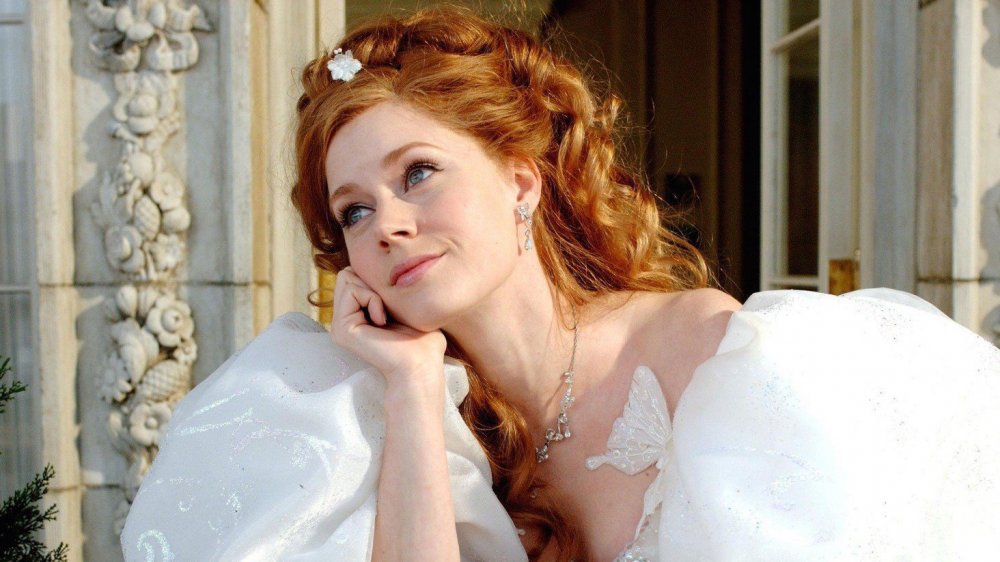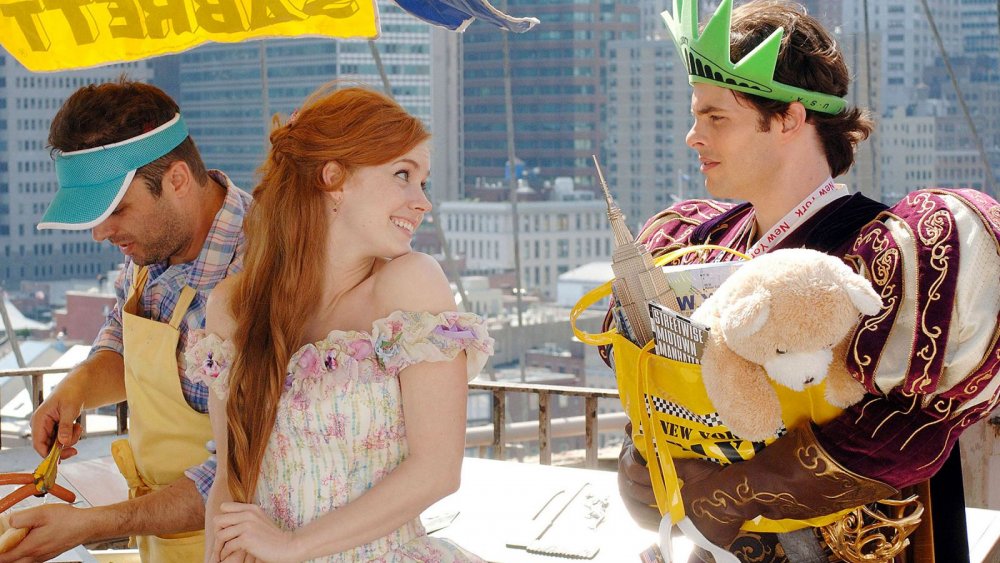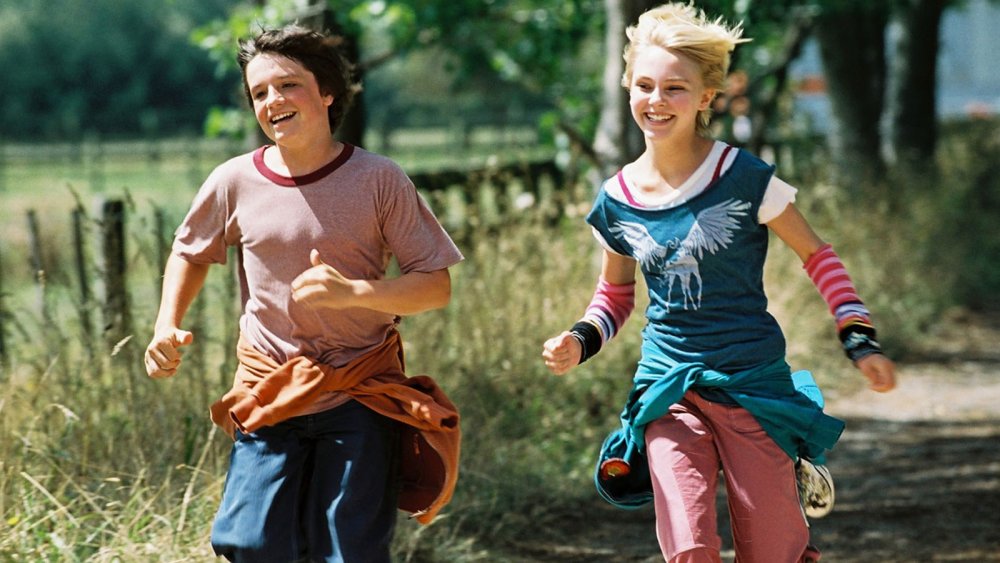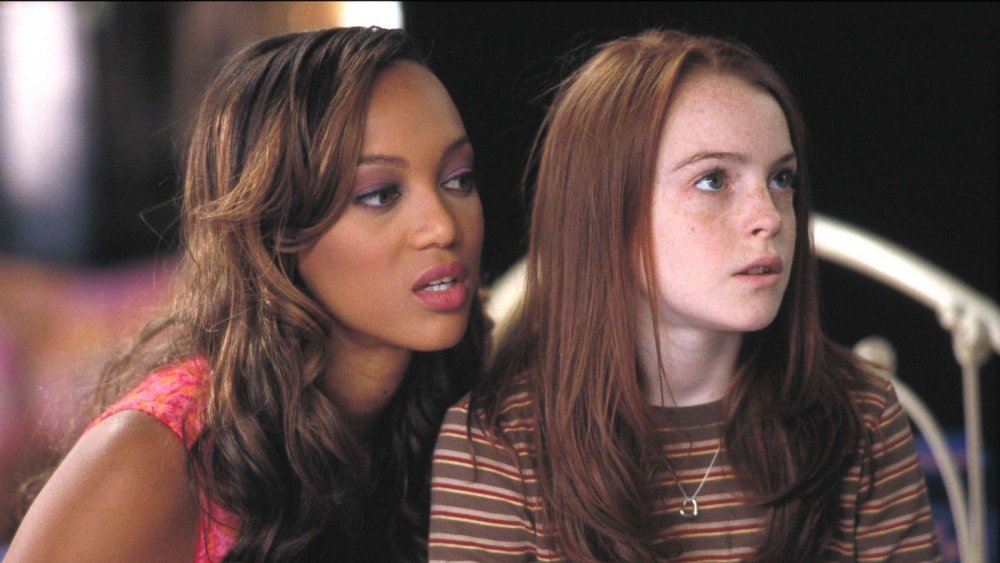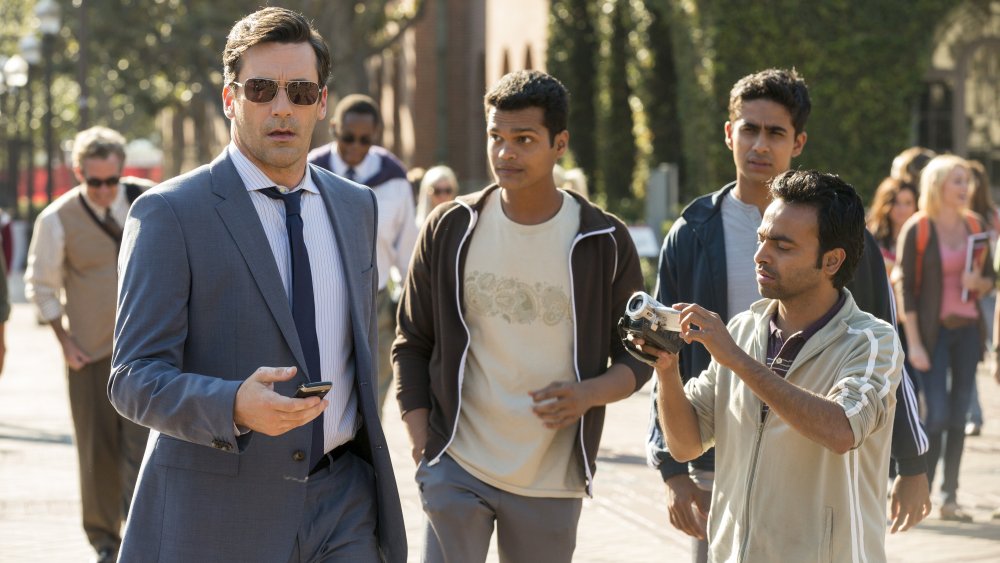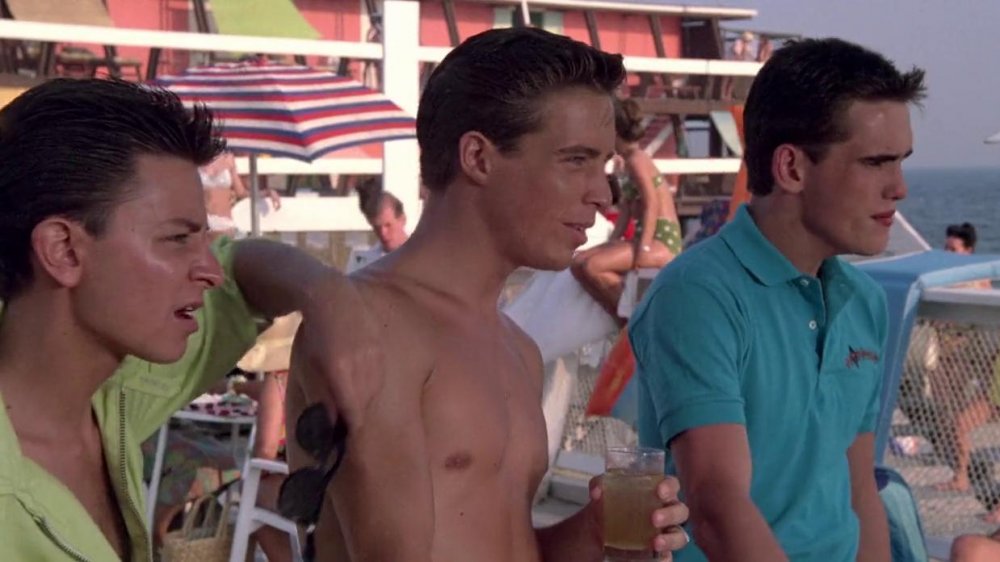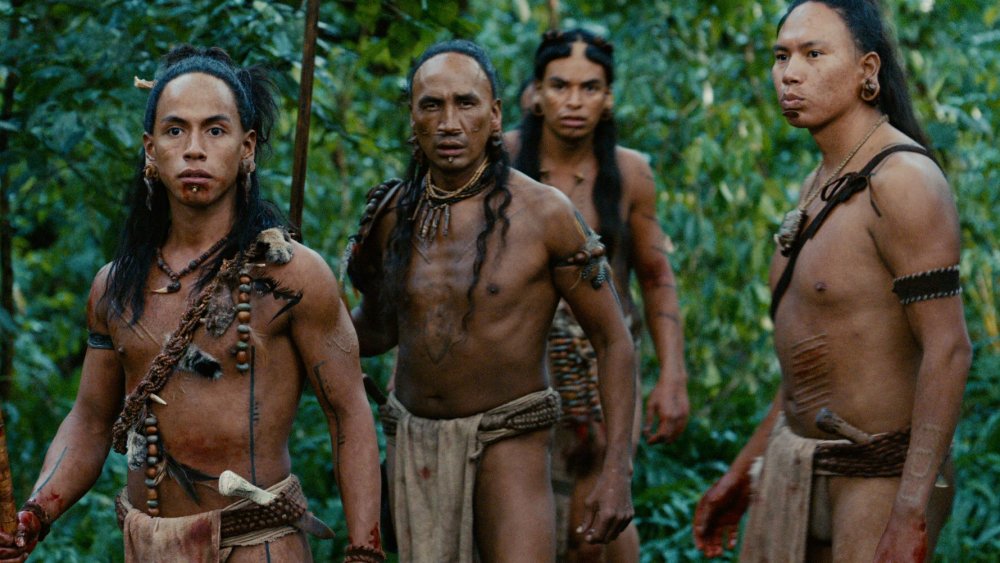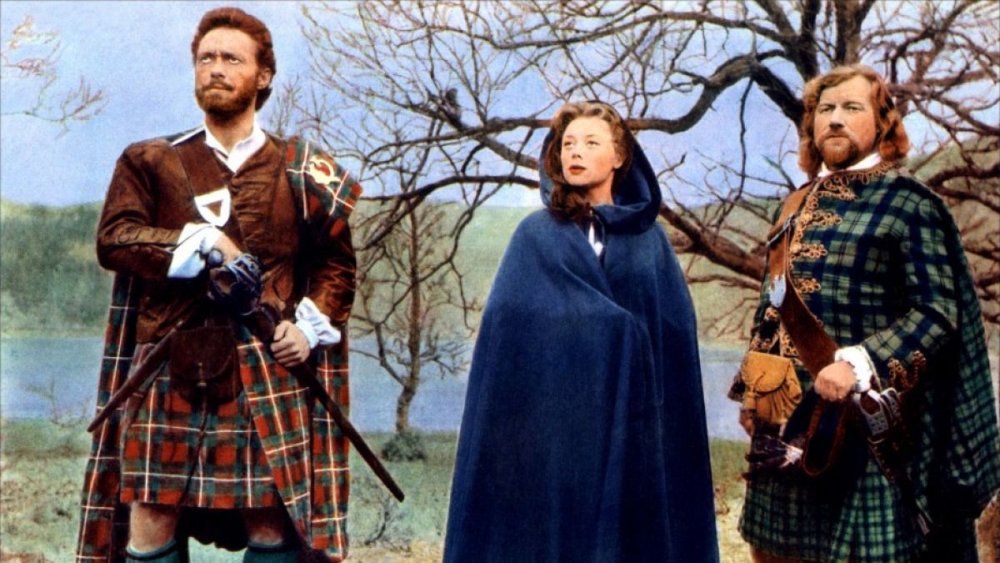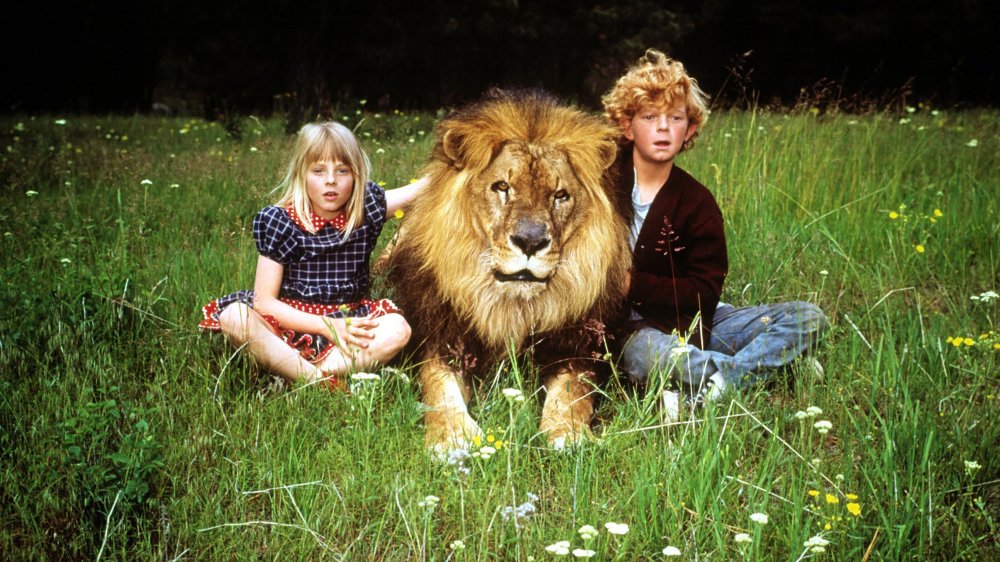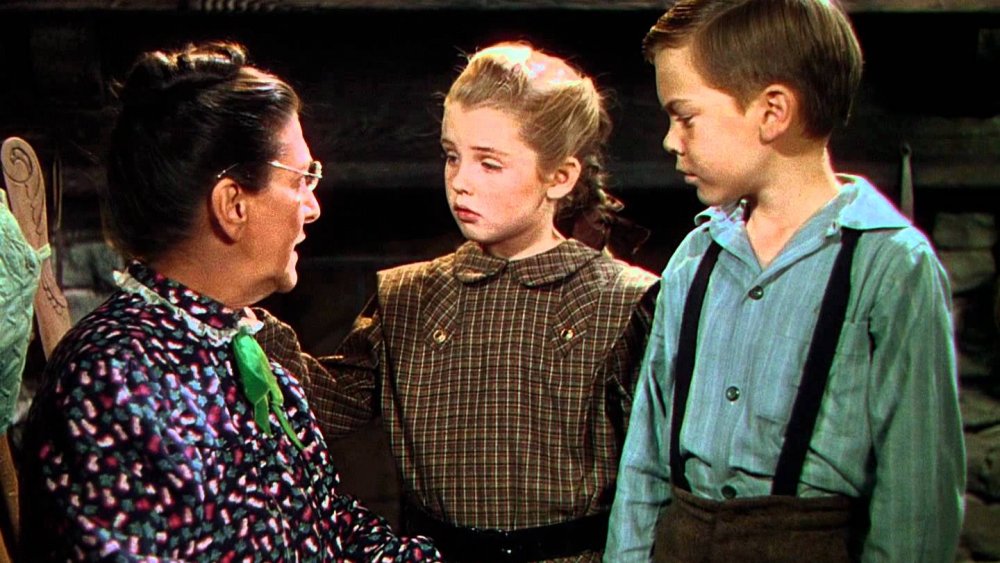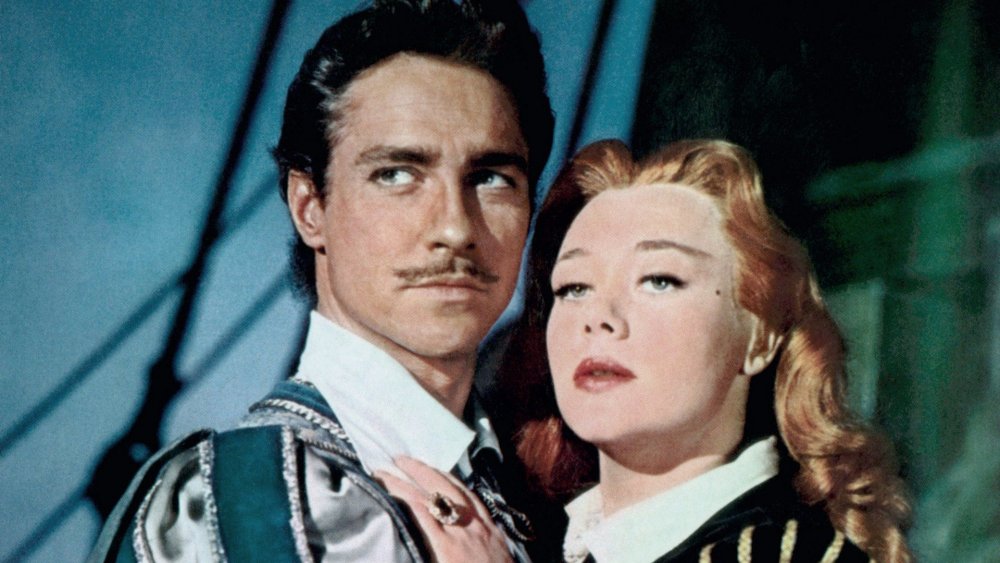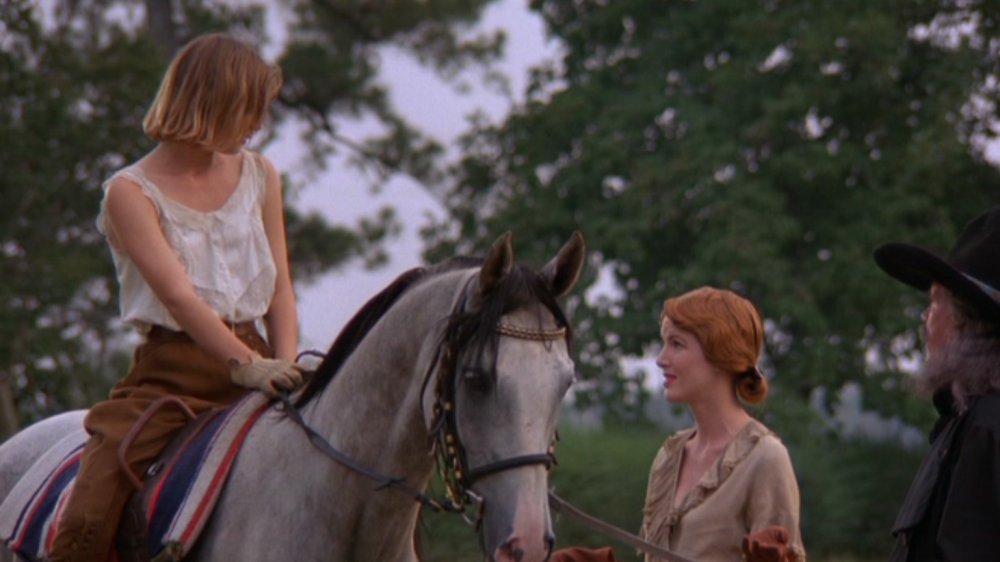The Best Disney Movies You Can't Watch On Disney+
Disney+ has arrived, ready to deliver the studio's vast empire of entertainment unto the masses. Disney princesses? They're there, from Ariel to Moana, with all their direct-to-video sequels, television spinoffs, and holiday specials. Marvel? Not only can you now access the entire MCU on your phone, you can plumb the depths of Marvel's animated history. Did you know there was a 1979 Spider-Woman cartoon? How about a Silver Surfer series featuring Marvel obscurities like Pip the Troll and Mentor, not to mention 1990s versions of Gamora and Nebula? They're real, and they can be accessed with a couple of well-placed screen taps. Star Wars? Duh. Pixar? Obviously. National Geographic? Get ready to learn more than you ever knew there was to know about veterinary medicine in rural Michigan, courtesy of Dr. Pol's 16 seasons' worth of content.
Yet for all its movies, documentaries, shorts, and series, Disney+ does not include the entire catalog of Disney entertainment. And it's not just box office bombs and general clunkers that are missing — there are genuine masterpieces mysteriously absent from the Disney+ library. We're here to introduce you to the best Disney movies you can't watch on Disney+, from tales of the Scottish highlands to elegies for the Mayan way of life.
Enchanted
Frozen garnered quite a lot of praise with its clever subversion of classic Disney tropes. But before Frozen, there was another Disney movie that took a high-heeled slipper to the Mouse House's most beloved cliches: the effervescent Enchanted.
Amy Adams stars as Princess Giselle of Andalasia, a golden-voiced lovely who, within the first ten minutes of the movie, talks to animals, is rescued by a dashing prince on a white steed, becomes engaged, and sings a ditty about the virtue's of true love's kiss. Then she's thrown into a world "where there are no happily-ever-afters": modern-day New York City. There, she must charm sewer rats, learn about the existence of divorce, and most importantly, come to understand herself as an independent woman with her own life to live.
While Enchanted is a pointed takedown of fairy tale excess, it's never sneering or sarcastic — though Giselle learns to slay her own dragons, she retains her joyous heart, love of animals, and frilly taste in clothing. It's less a critique of the Disney Princess and more a re-imagining that takes the best elements of the archetype — kindness, intelligence, bravery — and brings them to the fore, sans all the damsel-in-distress baggage. Giselle is a heroine in her own right, undaunted by the grime of the modern era — capable, in fact, of finding her place within it and growing into an entirely new type of princess.
Bridge to Terabithia
Bridge to Terabithia has long held a place in the annals of heartbreaking children's literature. Alongside classics like Old Yeller and Charlotte's Web, it is beloved for capturing the magic of childhood in all its imaginative, free-thinking glory — then delivering a vicious uppercut of realism, forcing its reader to consider the cruelties of life alongside its joys. The story of Jess and Leslie is a timeless one: The two become friends, discover an abandoned treehouse, and turn it into the center of Terabithia, the fantasy world they create together to make sense of their lives as small-town kids. In each other, they discover a friendship that transcends their differences — only to lose it in the story's infamously tragic ending. Yet as much as readers across generations have bemoaned Terabithia's cruel final chapter, it is still widely understood as an important lesson in loss. Though the movie indulges more than the book in flights of fantasy — Terabithia is lavishly realized on screen as a truly magical kingdom — it staunchly refuses to alter the ending. As on the page, the cinematic Terabithia is a luminous tale of joy, resilience, and the bond two lonely kids can share.
Life Size
Life Size is the sort of genre smorgasbord The Wonderful World of Disney specialized in back in the late 1990s. Lindsay Lohan plays a tomboy who, seeking to resurrect her deceased mother, accidentally brings Eve, a Barbie-style fashion doll, to life. Eve, played by Tyra Banks, is a cheerful naif whose misunderstanding of the real world gives way to true kindness — and a massive wealth of knowledge, given her many careers in medicine, law enforcement, aerospace, and beyond. It's the sort of movie that throws absolutely everything at the wall to see what sticks — kiddie necromancy, for example, in a book apparently lying around for grade-schoolers with enough saved-up allowance to purchase — but its heart is firmly fixed in the right place. Take Lohan and Banks' relationship: Sure, one of them might be the incarnation of femininity itself while the other is quarterback for her seventh-grade football team. But they find common ground regardless, learning, in each other, that no one is only what they appear to be upon first glance. In the age of the omnipresent selfie, there's never been a better time to indulge in this fish-out-of-water fairytale.
Million Dollar Arm
Sports stories have a generally familiar arc to them: obscurity, talent, work, crisis, success. In many ways, Million Dollar Arm follows this formula. J.B., a sports agent looking to book some big talent for his newly-formed company, decides to set his sights on India as a potential pool of baseball greats. A competition is established, promising a path to major league success for whoever demonstrates the most speed and accuracy in their pitch. Winners are found, returning to the U.S. with J.B. to begin their training — but things quickly go awry when the boys, raised in rural India, are sent forth with little in the way of guidance.
Million Dollar Arm isn't a story of crushed hopes, and so the eventual success the boys find is right in line with the sports films of yore. But the tension between J.B. and the boys elevates the movie into something special. It's a relationship that contains multitudes, from the economic gulf between their lives to the history of cricket in India, without quite aligning to any expected formula. They're friends, mentors, comrades, and a family all in one, complicated by the money there is to be made if the arrangement goes well. Million Dollar Arm will satisfy one's craving for an underdog story for sure, but it's just as interested in exploring the global impact of the American sports machine and all those who toil within it.
The Flamingo Kid
The Flamingo Kid wraps the viewer up in a cozy blanket of 1980s cliches, from the magenta-and-teal color scheme to the glitzy luxury of the resort the story takes place within. Jeffrey, our hero, is a Brooklynite teen who finds himself working at the posh El Flamingo beach club, where, in quick succession, he falls in love, establishes himself as a talented gin rummy player, and is taken under the wing of member Phil Brody. Though the movie is set in the 1960s, its soul is entirely from 1984, the year it was made: Jeffrey's adolescent foibles get the loving John Hughes treatment, and the plot hinges on a reverence for the value of an honest day's work. What makes the movie truly great are the performances, especially Matt Dillon's turn as Jeffrey — where other actors might have misstepped and ended up with a smarmy striver, Dillon's Jeffrey is a charming every-boy with big dreams. The Flamingo Kid is a delight from beginning to end and exactly what anyone looking to Disney+ for feel-good entertainment could want.
Apocalypto
Apocalypto is an adventure story stripped to its most potent elements: A man on the run, a terrible threat, a home he longs to return to. To call it intense would be an understatement — much like Mel Gibson's previous film, The Passion of the Christ, Apocalypto spends as much time as it can within the grimiest, most brutal elements of its hero Jaguar Paw's 16th-century world.
And oh, how meticulously constructed is that world! Apocalypto is likely best remembered for its attention to detail: the entire film is delivered in the indigenous Yucatec Maya language, the cast is largely made up of indigenous actors, and it was largely filmed in Guatemala and the Mexican state of Veracruz. It is a deep immersion in a lost world, brought home by the timelessness of its story. Jaguar Paw might belong to a civilization past its glory days, facing down the destruction of the Spanish conquerors, and battling plagues whose origins he doesn't understand. But at his core, he is a man who wants to protect the things he loves. It is in this simplicity that Apocalypto roots itself, keeping the production from ever getting lost in the weeds of set design or historical minutiae. It is a story of a world none of us shall ever travel to, and yet it is a story we all understand. In centering that truth, it succeeds.
Rob Roy, The Highland Rogue
Before Merida was chasing will-of-the-wisps and consorting with witches, Disney told a very different tale of Scottish adventure in Rob Roy, the Highland Rogue. This wasn't the first movie to fictionalize the exploits of the legendary folk hero — 1922 saw a Rob Roy movie splash its tartan across the silver screen, and 1995 brought an Oscar-nominated adaptation to audiences worldwide. But Disney's has a charm all its own, and deserves to be seen by modern audiences.
In this rendition, Rob Roy is at his most roguish, trimmed, in true Disney style, of the violence other adaptations indulge. One might think that this would render the movie saccharine, but that is never the case — the movie merely has a different point of view than other Rob Roy biopics. One walks away from a screening of The Highland Rogue with visions of wedding parties and moors in their heads rather than bloody-handed violence, and thus a fuller portrait of just what Roy was so adamant about protecting. It's a joyous invocation of the legendary man and all he loved, appropriate for all ages in the truest sense: Anyone can, and will, enjoy it at any stage of their lives, whether they're new to the tale or a diehard who's seen every other version.
Napoleon and Samantha
Is there any bond, Napoleon and Samantha posits, more special than the one between a boy and his lion? One, actually — that of kids on the run, against all circumstances, learning the power of friendship. This is a strange little movie, possibly best known for being Jodie Foster's feature film debut, richly deserving of modern praise from an app-watching audience who's likely never heard of it. Napoleon, a kid raised by his grandfather, comes into possession of a lion called Major when the circus clown in charge of him is unable to take him back to Europe. Possessed of bad teeth and a placid nature, Major is the perfect housecat — but their bliss is interrupted when Napoleon's grandfather dies. Terrified of being sent to an orphanage, Napoleon and his friend Samantha set off to find a new home with Danny, a kindly grad student who's made his home in the mountains. Things go awry, naturally, but the heart of the movie shines through — especially since it refuses to settle for the happily-ever-after audiences might expect. Napoleon's life might contain a friendly lion, but reality still manages to intrude and the story settles in a place of hard-won hope. It's just fantastical enough to be a delight, while keeping its feet planted firmly enough on the ground to win over audiences of any era.
So Dear to My Heart
Something special happens when animation and live action are combined. The lines of reality are blurred, and magic takes root — it feels, for the film's runtime, as though truly anything could happen. So Dear to My Heart is a particularly charming entrant into this unique genre: Set in 1903 Indiana, it follows farm boy Jeremiah on his quest to raise a lamb rejected by its mother.
The movie is a perfect example of the sort of sentimental Americana Disney used to be so marked by, that today's fans might only associate with Walt Disney World's Main Street USA. Princesses were part of the studio, of course, but they were not yet dominant — Disney was still as fond of rural folktales as true love's kiss. There are few better examples of this era than So Dear to My Heart with its lush backgrounds, use of scrapbooking as a framing device, and lovely, understated songs. The sheer devotion evident in every frame and lyric keep the film from being cheesy — it might be a particularly soft-eyed portrait of farm life at the turn of the century, but darn it if it won't have even the most cynical city dweller swooning at its lavishly rendered scenes of pastoral autumn. So Dear to My Heart is, at its core, a story about home, and whether one watches from 1948 or the new millennium, that's a theme that resonates.
The Sword and the Rose
Though it might feature princesses and marriage, The Sword and the Rose is not your standard Disney princess fare. It is, in fact, an adaptation of the 1898 novel When Knighthood Was in Flower, a romantic depiction of Mary Tudor's romance with Charles Brandon, the commoner who would become the Duke of Suffolk. This is a grandly midcentury tale, at once shamelessly romantic and totally anachronistic. Its depiction of Mary Tudor, for instance, borrows massively from the teenagers of the studio's era: She rebels via dance, insists upon her own preferences, and shocks the adults in her life with her disdain for tradition. It's doubtlessly inaccurate in its details but a whole lot of fun as a result, especially to today's viewers. Nowadays, it's not just a historical story but a historical artifact in its own right, capturing a postwar world suddenly flooded with teenagers who wanted movies that reflected their growing independence. Moreover, it's an utterly gorgeous movie to look at, full of rich fabrics and elaborately detailed sets. The Sword and the Rose is the encapsulation of the 1950s Disney costume picture, from its actors' clipped transatlantic accents to its dance-crazed adolescents, and it's all the better for it.
Wild Hearts Can't Be Broken
The circus might not be what it used to in today's culture, but Wild Hearts Can't be Broken whisks the audience off to the U.S. of the Great Depression, when the three rings could represent hope itself to a public tired of fruitless striving.
Sonora is a lonesome girl who finds herself mucking stables for a traveling circus. There, she encounters the then-contemporary act of horse diving, in which a rider and her steed dive from a great height into water, and falls immediately in love. This is a classic story told in a very unique way — horse diving was never one of the most famous circus acts, and, in a world more attuned to animal cruelty, it has virtually vanished. But Gabrielle Anwar's Sonora is so passionately portrayed, the particulars of her situation fall away. What matters is that she has found purchase in a world that's given her little reason to believe in anything, and she would rather die than return to a life without horse diving in it.
She is sorely tested on all sides — the Depression, injury, and backstage sniping all take bites out of her — but grit carries her through. Wild Hearts Can't be Broken emerges at the end of it, tattered of costume and smeared with greasepaint, as a tribute to the strangest corners of entertainment. Sonora's art might be lost, but her passion and pride shine through every frame.
